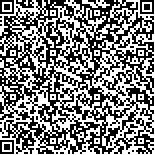下载中心
优秀审稿专家
优秀论文
相关链接
摘要

GOSAT卫星观测反演大气CO2浓度精度已经提高到了1—2 ppm,而卫星数据能否准确地揭示全球和区域大气CO2浓度变化特征还缺乏充分的评价与分析.本文针对已经连续运行观测3年的GOSAT卫星,收集了来自美国NASA-OCO团队(ACOS)和日本环境研究所GOSAT团队(NIES)基于各自算法反演的两套大气CO2柱浓度数据,描述并分析了全球大气CO2时空变化特征.分析结果表明,从XCO2反演的绝对值结果来看ACOS总体上比NIES的高出约2 ppm左右,但从时空的相对变化上它们揭示了相近的大气CO2浓度时空变化特征.两套数据显示出全球平均大气CO2浓度在2010年—2012年的3年期间年增量分别为1.8 ppm和2.0 ppm;季节变化幅度,北半球最大4—6 ppm,南半球最大约2 ppm,这与地面观测结果基本一致.进一步将EDGAR 4.2人为排放总量格网化数据与GOSAT卫星观测反演的CO2浓度进行相关统计分析,结果指出两套数据对人为排放量有着微弱的响应.本文结果指出目前GOSAT卫星观测反演的XCO2可以检测出全球和区域大气CO2浓度的年变化、季节变化和区域空间变化的特征;GOSAT卫星10.5 km空间分辨率的观测虽难于检测出点源的浓度变化,但从区域上对人为排放的累积效应的监测显示了一定的应用潜力.
The applicability of column-averaged CO2 dry-air mixing ratio (XCO2) data derived from Greenhouse Gases Observing Satellite (GOSAT) observations should be comprehensibly analyzed. Such assessment is important to reveal spatiotemporal variations in atmospheric CO2 concentration at the global and regional scales, as the XCO2 retrieval bias of GOSAT has decreased to 1—2 ppm. We analyzed and evaluated the spatial and temporal variations in XCO2 at a global and regional scale using GOSAT data from 2010 to 2012. Furthermore, we preliminarily analyzed the response of GOSAT data to anthropogenic emissions. Two data sets of XCO2 from the OCO team of NASA (ACOS) and the Japan National Institute of Environmental Studies (NIES) GOSAT team, respectively, were used with different retrieval algorithms for GOSAT observations. ACOS-XCO2 is generally approximately 2 ppm higher than NIES-XCO2, whereas similar variability at space and time is shown in the two data sets. The annual increment of global averaged atmospheric XCO2 concentration is 1.8 ppm from 2010 to 2011 and 2.0 ppm from 2011 to 2012; the seasonal variation is 4—6 ppm in the Northern Hemisphere and approximately 2 ppm in the Southern Hemisphere; this finding is generally consistent with the statistical results of CO2 variability from ground-based measurements. In addition, GOSAT observations respond weakly to the anthropogenic emissions on the basis of correlation analysis between yearly averaged GOSAT XCO2 and cumulative yearly anthropogenic emissions obtained from the Emissions Database for Global Atmospheric Research data. Our results demonstrate that GOSAT observations can detect the spatial and seasonal variability in CO2 at a global and regional scale. These observations can be applied in monitoring the cumulative effects of anthropogenic emissions at the regional scale, although GOSAT encounters difficulty in detecting the variation magnitude of CO2 induced by the point source emission because of the unrefined spatial resolution of GOSAT footprints.

